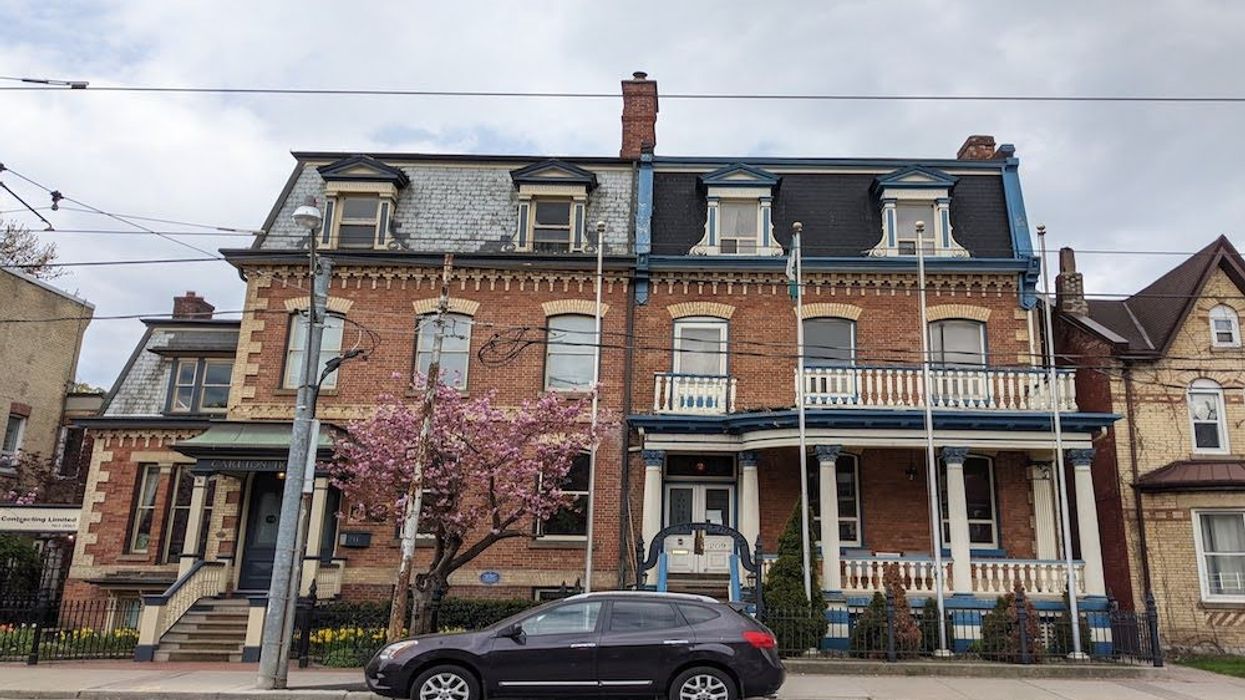South of Carlton Street and just east of Sherbourne Street is a laneway running about 350 metres from east to west. Those walking the laneway will see parked cars in reserved spaces for the businesses and homes fronting Carlton Street, two-storey garages, bay windows, air conditioning units, rooftop patios, fire escapes, street art and garbage bins for the restaurants closer to Parliament Street.
This is Doctor O Lane, named after Doctor Oronhyatekha (pronounced o-ron-ya-day-ga), the second Indigenous person in Canada to earn a medical degree in 1867. The lane runs directly past his former home, a semidetached Second Empire style structure, at 209 Carlton Street where he lived for a little over a decade.
From Shoemaker to Physician to Philanthropist, and More
Doctor Oronhyatekha was born in 1841 on the Six Nations of the Grand River Reserve near Brantford, Ontario. A Mohawk man, his name means Burning Cloud or Burning Sky. He was also known by his baptized name Peter Martin and Dr. O, a nickname given as people had difficulties pronouncing his name.
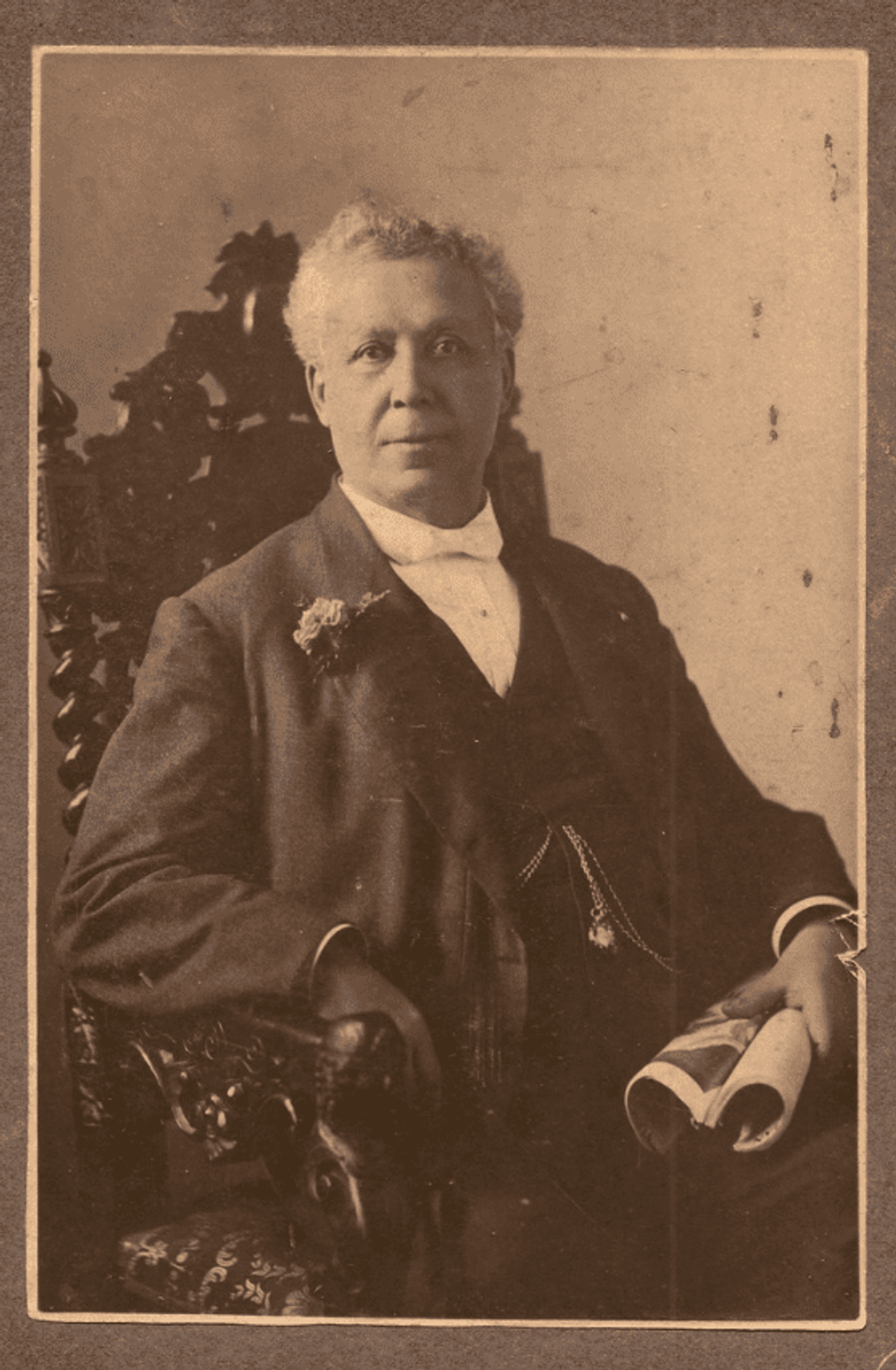
Like many Indigenous peoples, Doctor Oronhyatekha went to a residential school. He attended The Mohawk Institute where many of the children were taught manual labour skills and forced to abandon their cultures and assimilate into the Euro-Canadian lifestyle. When Doctor Oronhyatekha was at The Mohawk Institute he was trained to be a shoemaker and tried to escape at least three times.
Doctor Oronhyatekha became a shoemaker, but had dreams of a higher education -- which he achieved. He impressed the Prince of Wales (future King Edward VII) and Sir Henry Acland, the prince’s physician, when he presented a welcoming speech to the monarch. The speech and Doctor Oronhyatekha’s interest in medicine led the pair to invite him to Oxford University, where he became the first known Indigenous Oxford scholar. He later enrolled at the University of Toronto where he received his medical degree, becoming the second Indigenous person in Canada to do so after Peter Edmund Jones in 1866.
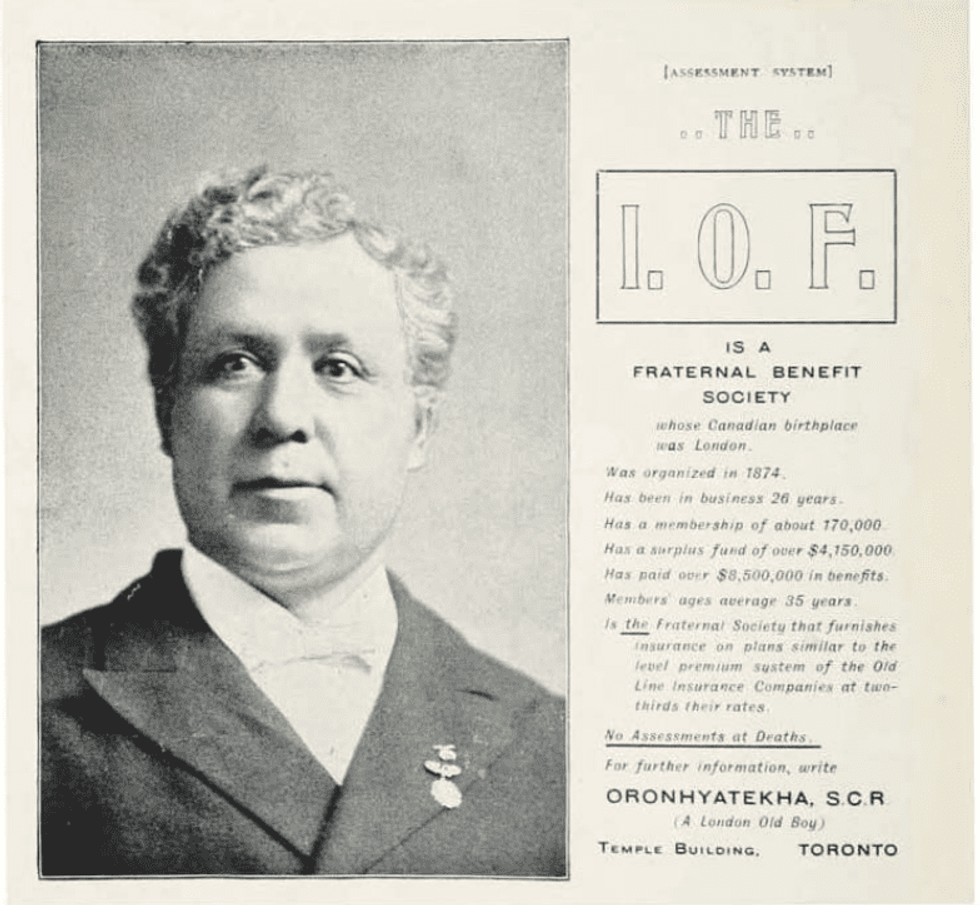
Doctor Oronhyatekha practiced across Southern Ontario and in the U.S., opening practices in Frankford, Stratford, Tyendinaga, Buffalo, London and Toronto. His work went beyond medicine as he was elected to the Grand General Indian Council of Ontario and Quebec, bringing his passion for Indigenous issues to the forefront and fighting against restrictive measures in the Indian Act.
He headed the Independent Order of Foresters (IOF), an organization still around as Foresters Financial, which aimed to provide fraternal insurance policies for the working class. When Doctor Oronhyatekha took the leadership position, the organization was struggling and nearly bankrupt. Doctor Oronhyatekha led the IOF to become the largest fraternal insurers on the continent and increased membership to over 275,000 people.
He moved the IOF headquarters to Toronto in a beautifully designed George W. Gouinlock skyscraper, which was the city’s tallest building until 1905. The headquarters sat at Richmond Street West and Bay Street until 1970 when it was demolished. Its entranceway and some panels can be seen at Guild Park and Gardens.

The Amsterdam
Doctor Oronhyatekha spent his final years in an 1872 built home at 209 Carlton Street. While his presence is commemorated with a plaque from the Cabbagetown Preservation Association, many will notice it is placed on the façade of 211 Carlton Street as the owners of 209 Carlton Street at the time did not want the plaque placed on the property.
The house is located in Cabbagetown, which sits on the traditional territory of the Mississaugas of the Credit, the Anishnabeg, the Chippewa, the Haudenosaunee and the Wendat peoples. In the late 1840s it became home to Irish immigrants fleeing to Canada from the famine. The neighbourhood got its name as residences grew cabbage and other vegetables in their front yards.
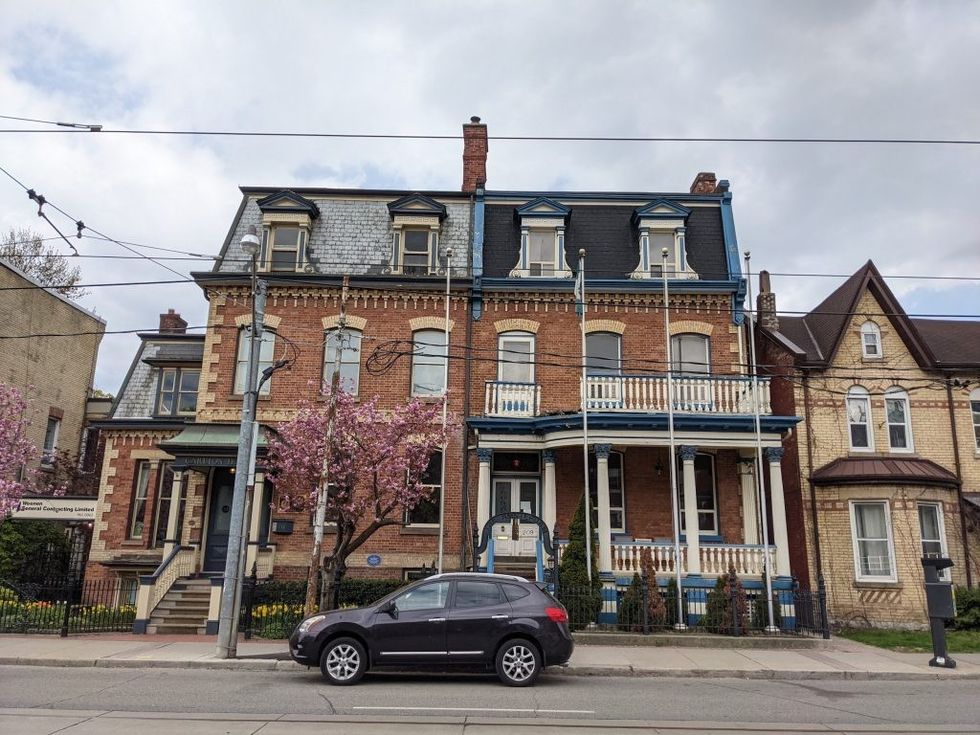
Doctor Oronhyatekha moved to the residence in 1896. The house features a mansard roof and a large veranda with pillars holding up a second-storey balcony, which was redone to emulate the main floor. The home was a single-family residence for over 30 years after Dr. Oronhyatekha’s death, which was rare as its neighbour and others on the street became multi-unit properties decades prior. It was in 1946 when the home was converted into a 12-unit rooming house operated by Mrs. Ethel Marshall.
The home is on the market for $3.29M with the listing noting it is ideal for a senior or retirement residence, school or office building. The home spans over 5,900 sq. ft and comes with a coach house. Interior photos from the listing suggest the building was completely gutted and retrofitted.
Its last occupant was The Amsterdam Guest House. Elements of the former business linger on the property like the empty flag poles that flew the Canadian and international flags and a mental sign above the stairway leading to the front door with faded letters reading “The Amsterdam.”
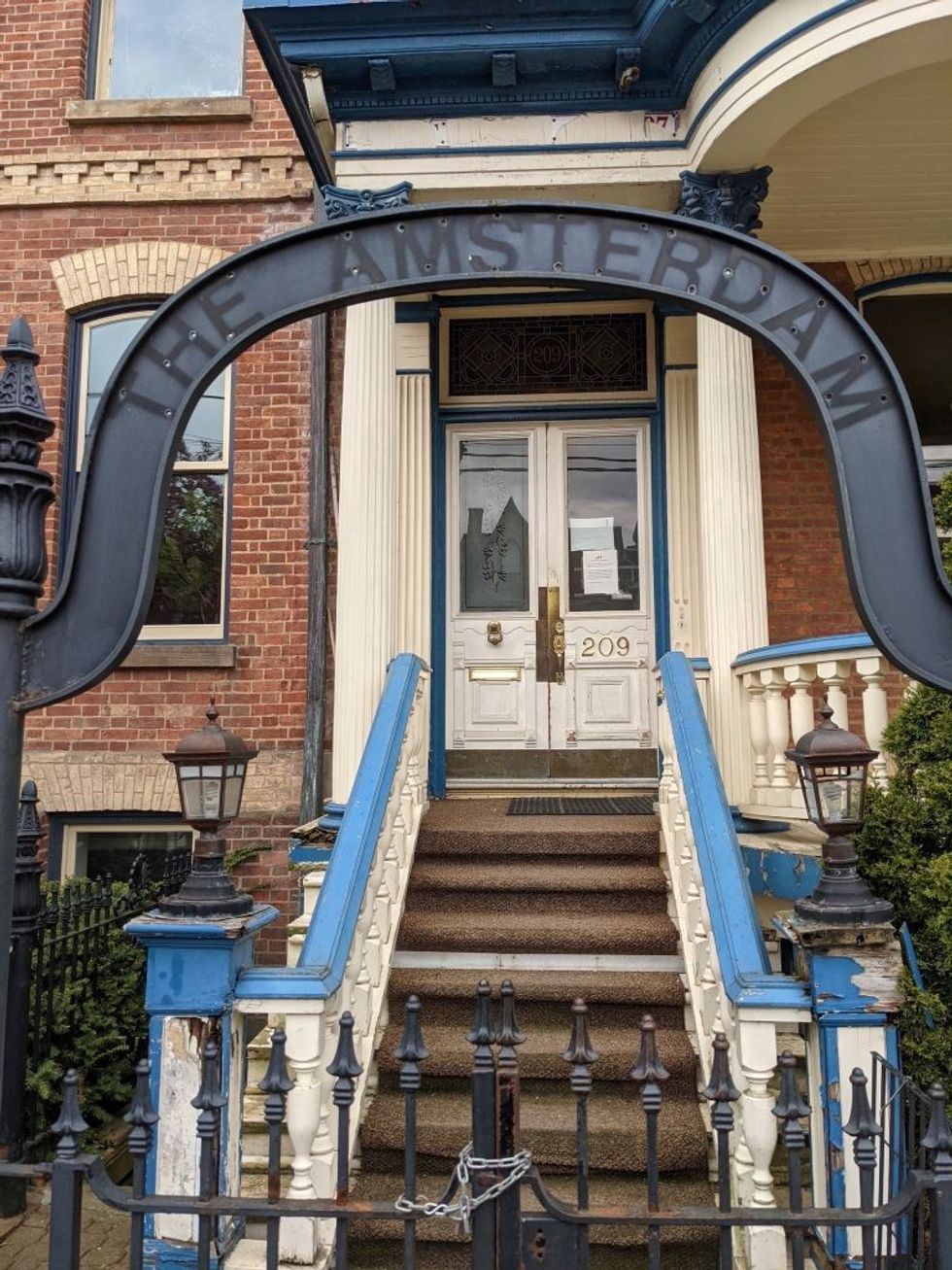
Remembering Oronhyatekha
In 1907, Doctor Oronhyatekha travelled to Savannah, Georgia where he suffered a heart attack and passed away. His body laid in state at Massey Hall with thousands of people coming to pay their respects.
Many will see his name internationally and throughout Ontario. Commemorative plaques are placed at Oxford University, his gravesite and Allen Gardens just blocks away from his home. The Historic Sites and Monuments Board of Canada named him a person of national historic significance and at the Foresters Financial head office there is a statue of him. His 1882 two-storey Italianate-styled house in London, Ontario was also recently given heritage status.
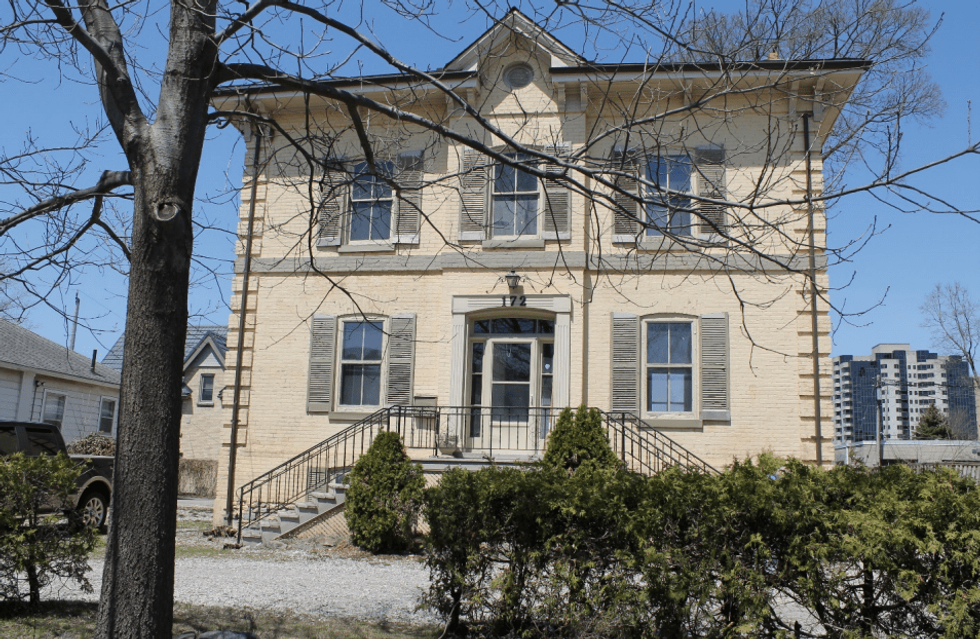
Doctor Oronhyatekha was a trailblazer. While he may have started his career as a shoemaker, his yearning to do more led him to create a lasting legacy that continues to make difference today.
